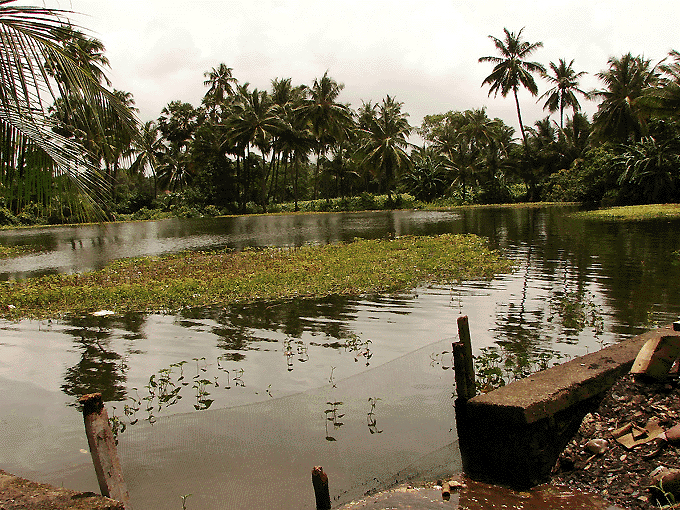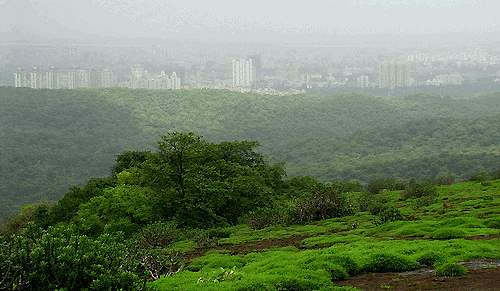
|
|
|
|
BY: SUN STAFF

Soparka stupa temple pond Feb 07, CANADA (SUN) — A serial exploration of the holy sites visited by Lord Caitanya. Surparaka
In Sri Caitanya-caritamrta Madhya lila we read about Lord Caitanya Mahaprabhu's pilgrimage travels through India, which took him through the southern regions, and north again, up the western coast.
Madhya 9 Summary: "At the village of Udupi He saw the Gopala Deity installed by Sri Madhvacarya. He then defeated the Tattvavadis in sastric conversation. The Lord next visited Phalgu-tirtha, Tritakupa, Pancapsara, Surparaka and Kolapura." The Surparaka visited by Lord Caitanya is located in Maharashtra state. Likewise, Nityananda Prabhu visited this Surparaka right after traveling to Mahismati, which is well north of Surparaka, in Madhya Pradesh.
There is also a place called Surparaka in Kerala, made famous by its association with Parasurama's pastimes (Brahmananda Purana). This Surparaka is also mentioned in the Mahabharata and the Puranas as being land that was reclaimed from the sea to serve as a dwelling place for Parasurama.
The Surparaka visited by Caitanya Mahaprabhu, however, is the Surparaka of central India, known today as Sopara. It is located in the Thane (Tana) district of Bombay Presidency, and was known historically as Nallasoppara, Soparaka, and Suiparaka. Sopara was a prominent port in ancient times, and served as the capital of Aparanta.
In our recent series on the places of Lord Brahma's worship, we visited the Sopara of Lord Caitanya's travels, and the beautiful free-standing murti of Lord Brahma residing there. The reader will find a great deal of information about Sopara in that article, which we won't repeat here. It is very pleasing to consider that Sri Caitanya Himself may have visited this Brahma deity.
In his purport to Caitanya-caritamrta Madhya 9, Srila Prabhupada provides confirmation of the location of the Surparaka visited by Lord Caitanya. When we consider the tangle of historical details, as evidenced below in the excerpt from India In Kalidasa, we can appreciate all the more how much clarity Srila Prabhupada brought to the matter of differentiating one ancient place name from another, even providing geographical markers and mileage information on many occasions:
Madhya 9.280
"After seeing Pancapsara, Sri Caitanya Mahaprabhu went to Gokarna. While there, He visited the temple of Lord Siva, and then He went to Dvaipayani. Sri Caitanya Mahaprabhu, the crown jewel of all sannyasis, then went to Surparaka-tirtha.
PURPORT The controversy about the two locations known as Surparaka was addressed in some detail in the book, India In Kalidasa by Dr. B.R. Ambedkar, Hyderabad (1947). He is describing the historical references to Aparanta, Kerala, and how the armies of Raghu attempted to conquer the entire western seaboard of India. He writes:
"Bhattasvami in his commentary on Kautilya's Arthasastra identifies Aparanta with Konkana, while the Brahma Purana includes Surparaka also. But with neither of these identifications would the description of Kalidasa agree. According to his description when Raghu has conquered the eastern coast he desires naturally to annex the entire western strip of the sea coast, and Aparanta, therefore, has been referred to in a general sense indicating the whole of the western border. N. L. Dey's supposition that Kalidasa places Aparanta to the south of Murala, the river Mula-Mutha, a tributary of the Bhima, is wrong. Because Murala is a river of Kerala as its name occurs in the description of the Keralas, and also because if we take Aparanra to be a country lying to the south of the Murala, we shall have inadvertently to place it even to the south of Kerala, i.e., Malabar, a reference to which it precedes! But if we take Aparanta to refer to the entire strip of land lying between Sahya (the Western Ghats) and the sea (Sahyalagna ivaarnavah) our difficulty will be solved as Kerala then would form a country in the stretch of Aparanta.
The description of Aparanta starts with verse 53 and ends with verse 58, while that of Kerala is given in verses 54-55. This Kerala, where the fear of approach of Raghu's forces made the women cast off their ornaments, was Malabar. The entire western coast, our Aparanta of this Rag/Mratffja included within its geographical limits the three divisions of Konkana from Daman to Goa, in the north, the coast of Karnataka in the middle and Kerala in the south. Kerala was thus Malabar."

View of Kandivili, to the ancient Arabian Seaport of Nala Sopara, from Yeoor trail Balarama and Nityananda's Travels:
Again, we find that both Lord Balarama and Nityananda Prabhu also visited Surparaka tirtha.
Srimad Bhagavatam 10.79.19-21
"The Supreme Lord then traveled through the kingdoms of Kerala and Trigarta, visiting Lord Siva's sacred city of Gokarna, where Lord Dhurjati [Siva] directly manifests himself. After also visiting Goddess Parvati, who dwells on an island, Lord Balarama went to the holy district of Surparaka and bathed in the Tapi, Payoshni and Nirvindhya rivers. He next entered the Dandaka forest and went to the river Reva, along which the city of Mahishmati is found. Then He bathed at Manu-tirtha and finally returned to Prabhasa." In Chaitanya Bhagwat, Adi Lila 9 by Vrndavana dasa Thakur, we read:
"Sri Nityananda travelled South to Kanya Kumari and saw the beautiful deity of Durga devi installed near the shore of the Indian Ocean at the southern tip of India. He also went to Sri Avantapura and the Panca-Apsara Lake. In Gokarna he visited the temples of Lord Siva. In Kerala and Trigarla He went house to house showering His causeless mercy.
He crossed most of the rivers that flowed down from the Vindhya Hills and covered the tract of land south of the Vindhyas known as Payonci; then He wandered a while in Tapti. He visited Reba, Mahismati, Mallatirtha, Surparaka and then headed westward.
Lord Nityananda travelled all over the country in a joyful mood, fearless and carefree. He was constantly submerged in ecstatic love of Krishna. Overcome with ecstasy, sometimes He cried and sometimes He laughed. Who can understand the blissful turmoil which stirred in His heart?"
| |